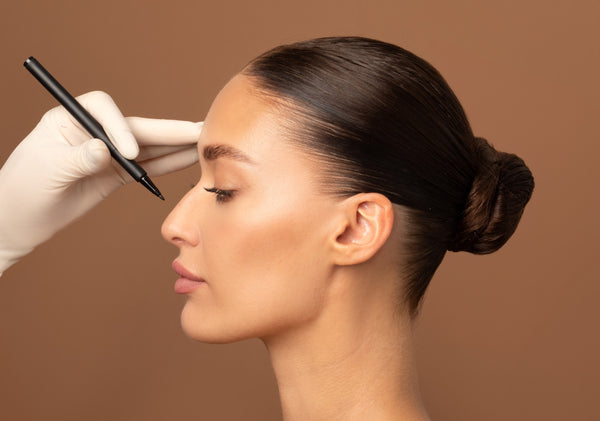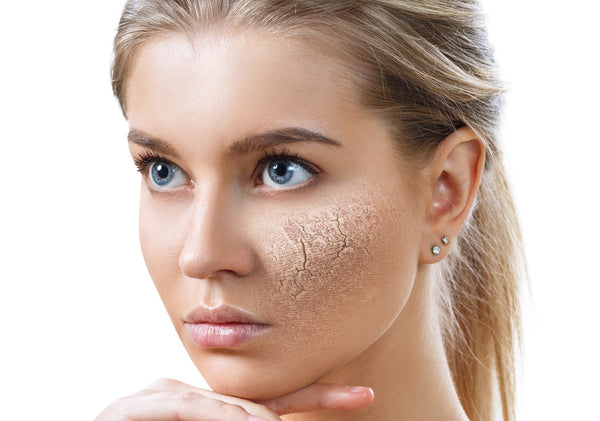What is Glycolic Acid?

What is Glycolic Acid? Your Secret Weapon for Skin Rejuvenation
Let's see... you've tried countless products, experimented with a cocktail of ingredients, and even splurged on pricey treatments. But despite your best efforts, you’re left with lackluster, irritated skin and endless frustration.
Sound familiar?
Glycolic acid may be the missing ingredient to take your complexion from surviving to thriving with confidence. When used wisely, glycolic acid works wonders for your skin, but without the right knowledge, it can easily backfire.
MD GLAM is here to guide you on your journey and ensure you reap the full benefits of this skin-resurfacing powerhouse safely and effectively.
Understanding Glycolic Acid: What is it, and Why is it Beneficial?
Glycolic acid is a naturally occurring alpha-hydroxy acid (AHA) derived from sugarcane. AHAs are a group of water-soluble acids known for their exfoliating and rejuvenating properties. One of the most widely recognized AHAs? You guessed it—glycolic acid.
 With its small molecular size (the smallest of all AHAs), glycolic acid deeply penetrates your skin to remove dead skin cells and reveal a smoother, brighter complexion underneath.
With its small molecular size (the smallest of all AHAs), glycolic acid deeply penetrates your skin to remove dead skin cells and reveal a smoother, brighter complexion underneath.
In skincare, glycolic acid is often incorporated into various products, like cleansers, toners, serums, or peels, to address various skin concerns. From acne to hyperpigmentation, uneven skin tone to dullness, this active ingredient is a true multitasker.
What makes glycolic acid even more impressive is its ability to act as a catalyst, amplifying the absorption of other ingredients in your skincare routine.
Talk about a skincare MVP.
So, how does this versatile ingredient do what it does?
How Does Glycolic Acid Work?
Thanks to its unique properties, glycolic acid works its magic on a cellular level. This is mainly due to the deep-penetrating, small molecular size we mentioned earlier.
Once absorbed, glycolic acid exfoliates the top layer of dead skin cells and stimulates cellular turnover. It breaks down the bonds between dead skin cells and sloughs them off. The result? Fresh, brand-new skin on the other side.
Sayonara, skin texture—Hello, skin radiance!
The exfoliating power of glycolic acid delivers a multitude of benefits—let’s dive into them.
5 Skincare Benefits of Glycolic Acid
 This active ingredient does so much more than give your skin complexion a glow-up. Thanks to glycolic acid’s multitasking properties, you can experience transformative effects on your skin.
This active ingredient does so much more than give your skin complexion a glow-up. Thanks to glycolic acid’s multitasking properties, you can experience transformative effects on your skin.
Here are some of the biggest perks you’ll enjoy when you incorporate glycolic acid into your skincare routine:
1. Exfoliation
As discussed, glycolic acid's standout benefits are its exceptional exfoliating properties.
By gently dissolving the bonds that hold dead skin cells together, it removes the outermost layer of dull, damaged skin and leaves a smoother, brighter complexion in its wake.
We even harnessed the purifying power of this exfoliating ingredient in our very own Exfoliating Enzyme Scrub, which works wonders to minimize pores and refine your skin's texture.
With extra-fine exfoliating particles, this gentle yet effective treatment leaves your skin baby-smooth, creating the perfect canvas for skincare absorption.
2. Rejuvenation
 You’ll quickly find that many of glycolic acid‘s benefits stem from its exfoliating action. This holds true for its ability to encourage cell turnover (the growth of new skin cells).
You’ll quickly find that many of glycolic acid‘s benefits stem from its exfoliating action. This holds true for its ability to encourage cell turnover (the growth of new skin cells).
As it sloughs away old skin cells, new ones emerge. This process gives your complexion a brighter, more rejuvenated appearance and improves your skin's overall tone and texture.
Since glycolic acid stimulates collagen production (a protein that supports skin structure), it also helps boost elasticity and firmness—the makings of a radiant, fresh-faced complexion.
3. Acne Treatment
If you struggle with acne regularly, glycolic acid might be a helpful ally to add to your skincare arsenal.
Its exfoliation power helps eliminate excess oil, debris, and dead skin cells that contribute to breakouts and skin texture development.
As an antimicrobial, glycolic acid also rids your skin’s surface of acne-causing bacteria. Reducing the presence of these bacteria minimizes inflammation and the formation of acne lesions.
Combined with its powerful regenerative capabilities, glycolic acid has the potential to pack a powerful acne-fighting punch.
4. Skincare Booster
By gently exfoliating the top layer of skin, glycolic acid clears away dead skin cells and debris, paving the way for subsequent products to penetrate more deeply and effectively.
This means that serums, moisturizers, and other products will absorb better into your skin, maximizing their effects even more efficiently. This is especially beneficial for targeting specific skin concerns.
It’s like giving your skincare routine a turbo boost, supercharging your efforts for optimal results.
5. Anti-Aging
Unsurprisingly, the cumulative effects of all these incredible benefits mean that glycolic acid delivers a potent anti-aging boost, too.
As we age, our collagen levels naturally decline, leading to sagging and a loss of elasticity. Glycolic acid counteracts this by stimulating collagen and restoring your skin’s suppleness and resilience.
Its powerful exfoliation and regenerative properties also help minimize the appearance of fine lines, wrinkles, and age spots, as well as fade acne scars and hyperpigmentation.
That’s why Dr. Cat infused glycolic acid's “glow-getting” power in her Hyaluronic Acid Night C-Complex. This formulation contains a synergetic blend of ingredients that rejuvenate and deeply hydrate your skin at a molecular level—all while you enjoy your beauty sleep.
The catch? To unlock the benefits of glycolic acid, you have to use it the right way.
Safely Using Glycolic Acid in Your Skincare Routine
Some active skincare ingredients, like hyaluronic acid, are fairly compatible with all kinds of ingredients and skin types. Glycolic acid, however, requires a more strategic approach.
Here are some tips for getting the most out of this skin-transforming ingredient:
Start low, go slow
If you're new to glycolic acid, start with a lower concentration and gradually increase it as your skin adjusts.
This gives your complexion time to build a tolerance and minimize your chances of irritation.
Perform a patch test
 Before applying glycolic acid (or any new ingredient) all over your face, perform a patch test on a small area to check for any adverse reactions.
Before applying glycolic acid (or any new ingredient) all over your face, perform a patch test on a small area to check for any adverse reactions.
This helps you pinpoint potential sensitivities or allergies.
Protect your skin from UV rays
Glycolic acid increases your skin’s sensitivity, so don’t skimp on sunscreen to prevent sunburn and mitigate further damage.
Know which ingredient combinations work
While glycolic acid can enhance the efficacy of other active ingredients, it doesn’t play well with all of them.
Some ingredients you’ll want to avoid combining with glycolic acid are:
- Retinol: Both retinol and glycolic acid are potent exfoliators. Using them together can lead to excessive dryness, irritation, and sensitivity.
- Benzoyl Peroxide: Combining glycolic acid with benzoyl peroxide (a topical antiseptic) can cause excessive dryness and irritation.
- Vitamin C: While glycolic acid and vitamin C complement each other, using them simultaneously can trigger irritation in sensitive skin types.
MD GLAM: Rejuvenation Through Skincare
Navigating the vast skincare world often feels like an endless maze of trial and error. But with proper knowledge, you can harness the benefits of active ingredients, like glycolic acid, and unlock the smooth, radiant skin you dream of.
At MD GLAM, we've taken the guesswork out of your routine by crafting easy-to-use, medical-grade skincare solutions with premium ingredients. So, you can bid farewell to the frustrations and welcome a future of skin confidence and beauty.
Stay connected and join our Elite SMS Experience community for exclusive access to sales, promotions, and expert skincare tips!












